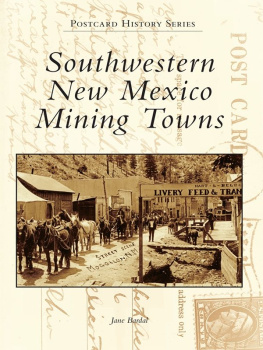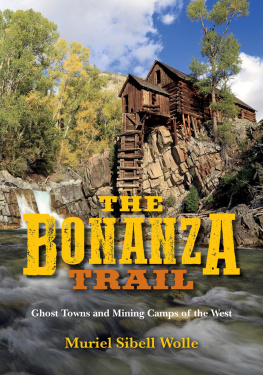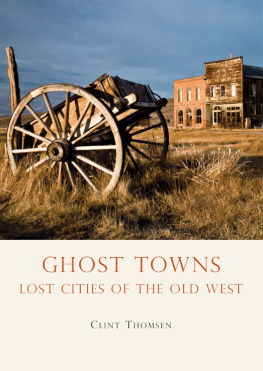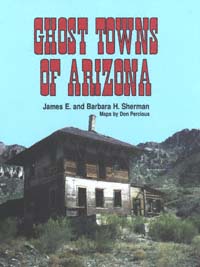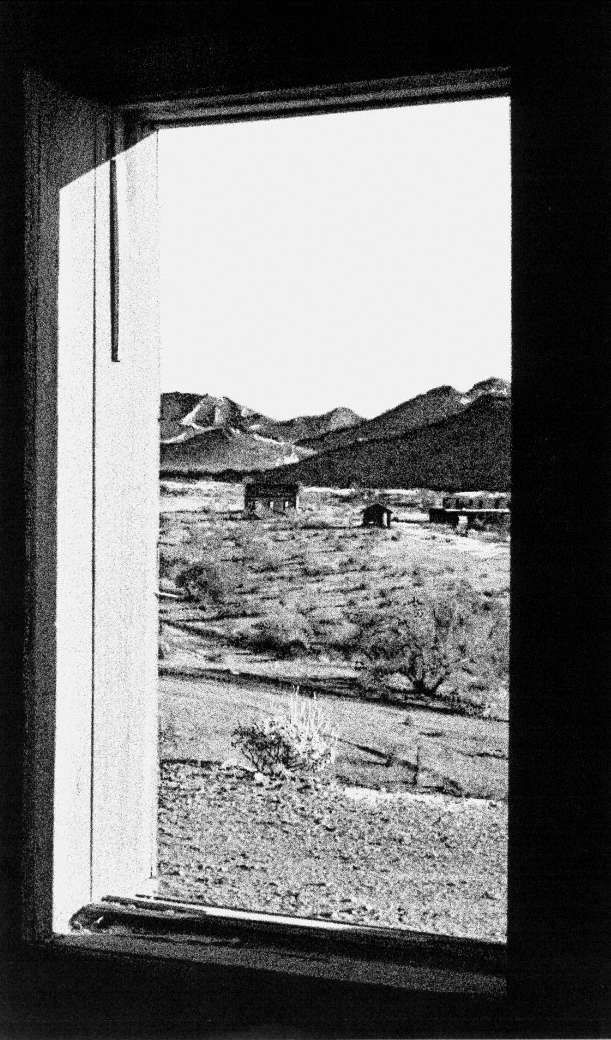| This book is to be read for fun. We have tried to steer clear of technical mining statistics and figures which would only encumber a book of this type. Our objective is to present brief sketches of the towns, their people, and events from their histories, enhanced by many old and present-day photographs, advertisements and artistic maps. |
| Some towns left long and detailed histories, while others left few or no accounts of their lives. Consequently we were selective. By no means have we attempted to include every ghost town in Arizona, but we have covered the majority. |
| How historically accurate many of the facts and stories are is anyone's guess. Early histories are often impaired by large gaps in information. Newspapers and business directories issued in any given period may have exaggerated or may have been incomplete, or time may have caused distortions in the memoirs written by old-timers for magazines, manuscripts and articles. We have presented the information as we found it, without elaboration or magnification. |
| In compiling our material, we visited almost a hundred ghost towns or their sites, collected over fifteen hundred photographs and used the generous facilities of museums and libraries. |
| We are gratefully indebted to the many who helped to make this book a reality. Our sincere thanks to the Arizona Pioneers' Historical Society, Tucson, and their most competent and efficient librarians, Nova Alderson and Margaret Sparks; to Sharlot Hall Museum, Prescott, and librarians Elva Breckinridge and Dora Heap; to Mohave Pioneers Historical Society, Kingman, and Kermit Edmonds; Historical Museum, Fort Huachuca, and Orville Cochran; Yuma County Historical Society, Yuma, and William Haught of Yuma Territorial Prison Historical Monument; Arizona Highway Department, and Warren Hill; University of Arizona Special Collections; American Smelting and Refining Company; Arizona Bureau of Mines; U.S. Geological Survey and U.S. Bureau of Mines library facilities, Denver, Colorado; Library of Congress; California State Library; National Archives; and Department of Postal Research. |
| For contributing information and photographs and for allowing us to rephotograph old pictures, our thanks go to W. C. Babcock, Charles Bronson, Nell Brown, Mrs. Herbert Enderton, James Loghry, Thomas McMichael, Maggie McShan, Mr. & Mrs. Ralph Morrow, Ted Makinson, Donald Quinn, Lillian Sweet-land, and Grant Van Tilborg. |
| Personal thanks to Don Percious, for his excellent maps, Edward F. Ronstadt for his photographic assistance, generous advice, and encouragement; W. A. Mutterer for the darkroom; Jim McBain and Peggy Scholder of Scot Photo for their fine service; Christopher Mathewson whose jeep was indispensable; Professor Sayner for his professional advice and assistance; John Briedis for his traveling companionship; Alvina Rabago, and Richard Macias. |
| We extend our deepest appreciation to the scores of other individuals throughout Arizona who allowed us to trespass on private property, gave directions, and took of their time to guide us to obscure locations. |
| Lastly, we thank those authors and publishers whose literary contributions made possible the research for this book. |
| It is our hope that Ghost Towns of Arizona will serve as a valuable guide and provide enjoyable reading to those who are fascinated by Arizona's past. |
 | | JAMES E. AND BARBARA H. SHERMAN |
|





